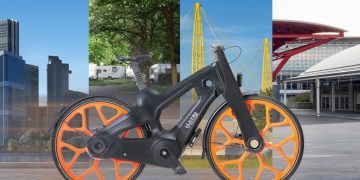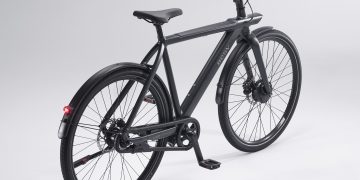Cycling technology has advanced by leaps and bounds over the last few decades. From carbon fiber frames to disc brakes, innovations have continuously shaped the cycling experience. One of the most significant recent advancements in cycling gear is the rise of electronic gear shifting systems. Gone are the days of manually adjusting gear levers with your hands—now, riders can shift gears with the push of a button, thanks to the development of sophisticated electronic shifters. But for casual riders, the big question remains: Are electronic gear shifters worth the investment?
This article will explore the world of electronic gear shifting systems, evaluate their performance improvements, and discuss whether the investment is justified for casual cyclists. We will also consider factors such as cost-effectiveness, ease of use, and long-term benefits to help you determine if an electronic shifting system is the right choice for your riding needs.
The Evolution of Gear Shifting Technology
Before diving into the specifics of electronic gear shifting, it’s essential to understand how traditional gear shifting systems have evolved. The standard mechanical derailleur system has been the industry standard for decades, allowing cyclists to manually shift gears via shifters on the handlebars. While these systems are reliable, they can require more physical effort and skill to operate, especially when under pressure or during long rides.
As technology improved, so did the mechanics of gear shifting. Electronic gear shifters were introduced to simplify the process and improve precision. These systems replace the traditional cable-and-pulley mechanism with electronic motors and sensors, making gear changes faster, smoother, and more accurate.
What Are Electronic Gear Shifters?
Electronic gear shifters consist of several components that work together to provide a seamless, hassle-free shifting experience. The primary components of an electronic shifting system include:
- Shifters: These buttons or levers allow the rider to change gears electronically, typically by pressing a button to shift up or down.
- Derailleurs: These are the motors that physically move the chain across the gears when a rider presses the button to shift.
- Battery: Electronic shifting systems are powered by a battery, usually mounted under the saddle or in the seat tube.
- Wiring: The system uses wires or, in some models, wireless connections to transmit the shift commands from the shifters to the derailleurs.
- Cables and Sensors: These help regulate the movement of the derailleurs and ensure that the shifts happen at precisely the right time.
Popular brands like Shimano, SRAM, and Campagnolo offer electronic shifting systems, with Shimano’s Di2 and SRAM’s eTap being two of the most well-known options on the market.
Advantages of Electronic Gear Shifters
For those considering upgrading their bike’s shifting system, it’s important to understand the potential benefits of electronic gear shifters. Here are some of the key advantages:
1. Precision and Consistency
One of the most significant selling points of electronic gear shifters is their precision. Unlike traditional mechanical systems, which can suffer from friction, stretching cables, or misalignment over time, electronic systems provide smooth and accurate shifts every time. The electronics are designed to handle the shifting process automatically, adjusting the derailleurs with great precision to ensure the chain moves smoothly between gears.
This consistency is particularly beneficial in competitive cycling or challenging terrains where gear accuracy is crucial. Casual riders, too, can appreciate the fact that electronic shifting eliminates the need for frequent tune-ups or adjustments, ensuring a hassle-free cycling experience.
2. Effortless Shifting
Electronic gear systems are often touted for making shifting easier and more intuitive. With a simple button press, the gear changes are executed quickly and smoothly. This ease of use can be especially advantageous for casual cyclists who might not have the mechanical skills or knowledge to adjust their mechanical gear systems regularly.
Riders no longer need to worry about fine-tuning their gear levers or dealing with shifting issues during a ride. The shift itself is more responsive and precise, requiring less effort from the rider, which can be a welcome improvement, especially on longer rides or during challenging climbs.
3. Customization Options
Many electronic shifting systems offer advanced customization options. Riders can set up their gear systems to shift in the way that best suits their riding style. For example, Shimano’s Di2 system allows for programmable shifting patterns and button configuration, letting users tailor the shifting process to their preferences.
For casual riders who like to personalize their bikes, the ability to adjust the shift patterns or the configuration of buttons can be a real bonus. Riders can make their bikes more comfortable and suited to their unique needs with ease.
4. Improved Performance on Hills and Tough Terrain
Riding in hilly areas or on challenging terrain requires precision shifting to maintain an efficient cadence. Electronic shifting systems offer faster, more precise shifts than mechanical systems, which can be important when riding through varying elevations. This can help the rider maintain better cadence and energy efficiency, ultimately resulting in smoother rides.
While this may be more beneficial for competitive cyclists, casual riders who occasionally take on hilly terrain will appreciate the ease of shifting on climbs without needing to worry about missing a gear or experiencing sluggish performance.
5. Reduced Maintenance and Adjustments
Electronic gear systems are known for their minimal maintenance requirements. Mechanical systems often need periodic adjustments to the cables or derailleur, as these can stretch or loosen over time. With an electronic system, there are fewer components that need adjusting, and since the system is self-calibrating, it often stays in top condition for longer.
Casual riders, especially those who use their bikes for commuting or recreational rides, may find the low-maintenance nature of electronic shifting an attractive feature. There’s no need to constantly worry about fiddling with cables or taking the bike in for regular tune-ups, which can save time and money in the long run.

The Downside: Are Electronic Gear Shifters Worth the Cost?
While the benefits of electronic gear systems are undeniable, there are a few factors that riders should consider before making the switch.
1. Cost
One of the most significant drawbacks of electronic shifting systems is their price. A high-quality electronic gear system can cost several hundred dollars, with premium systems like Shimano Di2 or SRAM eTap retailing for over $1,000. For casual cyclists, this price tag may be prohibitive, especially when compared to traditional mechanical gear systems, which are much more affordable.
In addition to the initial cost of the system, the battery in electronic gear shifters will need to be replaced after a certain period, adding another recurring cost. However, it’s worth noting that most systems offer long battery life (up to several months of use on a single charge), so this is less of an ongoing issue for many riders.
2. Complexity and Compatibility
Although electronic gear shifters are easy to use once installed, the installation process itself can be more complicated than a traditional mechanical system. For those who are not comfortable with bike mechanics, this could mean paying extra for installation by a professional.
Moreover, not all bikes are compatible with electronic systems. Some bike frames may not have the necessary internal cable routing, and retrofitting a bike with electronic components can be expensive and difficult. This can limit the accessibility of electronic gear systems for casual riders who don’t want to invest in an entirely new bike.
3. Weight
While the added weight of electronic shifting components is generally not significant, some riders may find that the additional electronics, wiring, and battery slightly increase the overall weight of the bike. For competitive cyclists aiming for the lightest possible setup, this may be a downside, although it’s unlikely to be a major concern for casual riders.
Is It Worth It for Casual Riders?
For casual riders, the decision to invest in electronic gear shifting systems largely depends on personal preference, budget, and riding style. If you are someone who primarily rides for leisure, short commutes, or occasional weekend trips, a traditional mechanical gear system may still offer all the performance you need at a fraction of the cost.
However, if you value convenience, ease of use, and long-term durability, and if you are willing to pay for these features, then an electronic shifting system could be a worthwhile investment. The performance benefits—such as precision, ease of shifting, and minimal maintenance—may enhance your overall riding experience, particularly if you plan to tackle more challenging terrains or longer rides.
Conclusion
Electronic gear shifters offer a host of advantages, including precise and effortless shifting, reduced maintenance, and improved performance on challenging terrain. While they come at a higher price point compared to traditional mechanical systems, they provide a level of convenience and customization that may be worth the investment for certain riders.
For casual cyclists who value technology, comfort, and low-maintenance gear, electronic shifting systems are a compelling option. However, for those on a tighter budget or who ride primarily on flat terrain, a traditional mechanical system might be all you need to enjoy a smooth and enjoyable ride.





































Discussion about this post